Abstract
An indirect phage analysis procedure was used to detect and follow the activity of the bacterial predator Ensifer adhaerens in situ in natural soil. The soil was percolated with an aqueous suspension of washed bacterial host cells so that the E. adhaerens cells naturally present in the soil would multiply in response to the host cells. The natural phage development which ensued against these multiplying E. adhaerens cells in the soil was then monitored by noting plaques which developed when the percolation fluid was plated with laboratory strains of E. adhaerens on laboratory media. The activities of the other members of the predation system that includes E. adhaerens (Streptomyces sp. strain 34 and a myxobacter) could not be monitored directly by phage analysis because phage were not found for them. Indirect monitoring was possible, however, because they were susceptible to attack by E. adhaerens. In general, the results were in agreement with previous observations by other methods of the predation sequence. E. adhaerens attacked Micrococcus luteus, Streptomyces sp. strain 34, and the myxobacter but did not attack several other possible species of hosts. It also did not respond to percolation of the soil with various nutrient solutions. E. adhaerens phage activity was not present in half of the soils percolated with M. luteus cells. This seemed to reflect too great a phage-host specificity for the technique as regards these soils, because E. adhaerens-like bacteria other than the strains used for plaquing were present in at least some of these soils. Although E. adhaerens did not attack Escherichia coli or Pseudomonas aeruginosa in soil, there was an overproduction of E. adhaerens phage if these bacteria were percolated simultaneously with M. luteus cells. The possibility is discussed that this represents an activation by M. luteus (or by a heat-extractable factor from it) of other bacterial predators that attack E. coli or P. aeruginosa and that these predators subsequently are themselves attacked by E. adhaerens.
Full text
PDF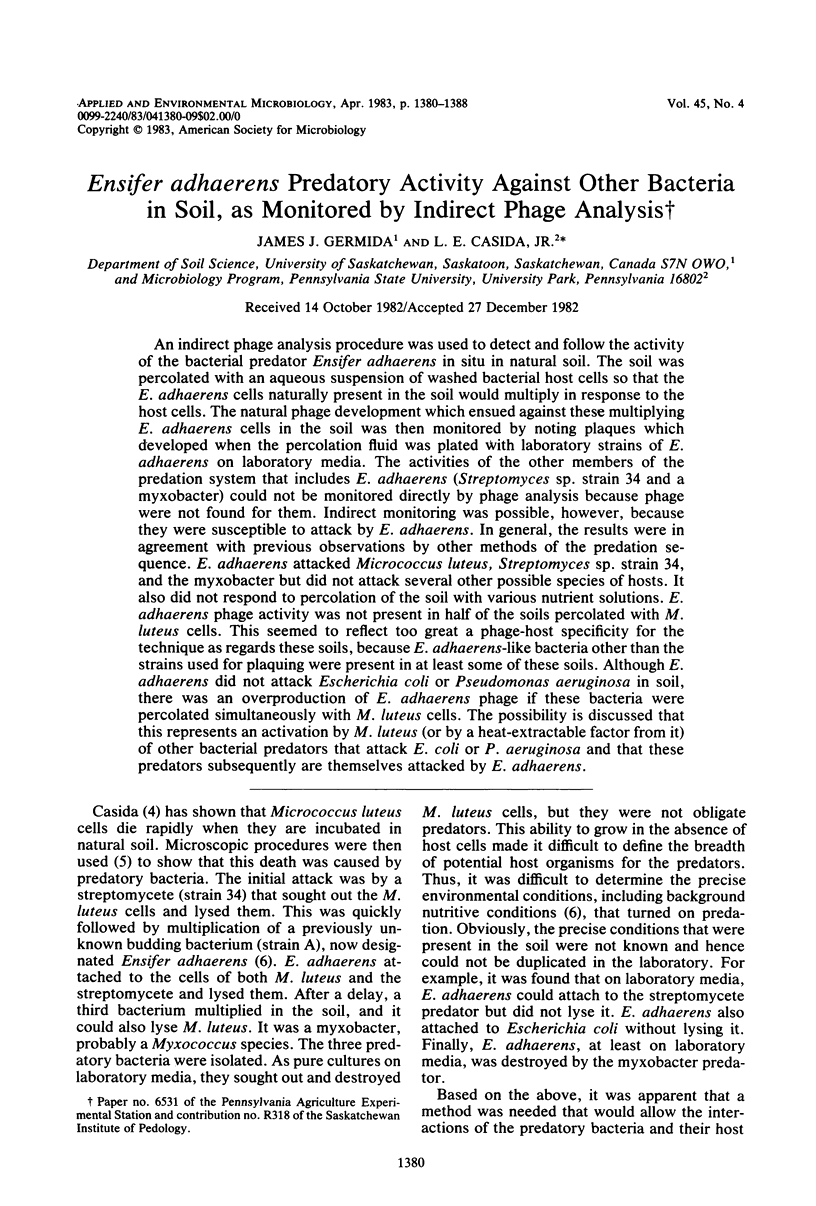
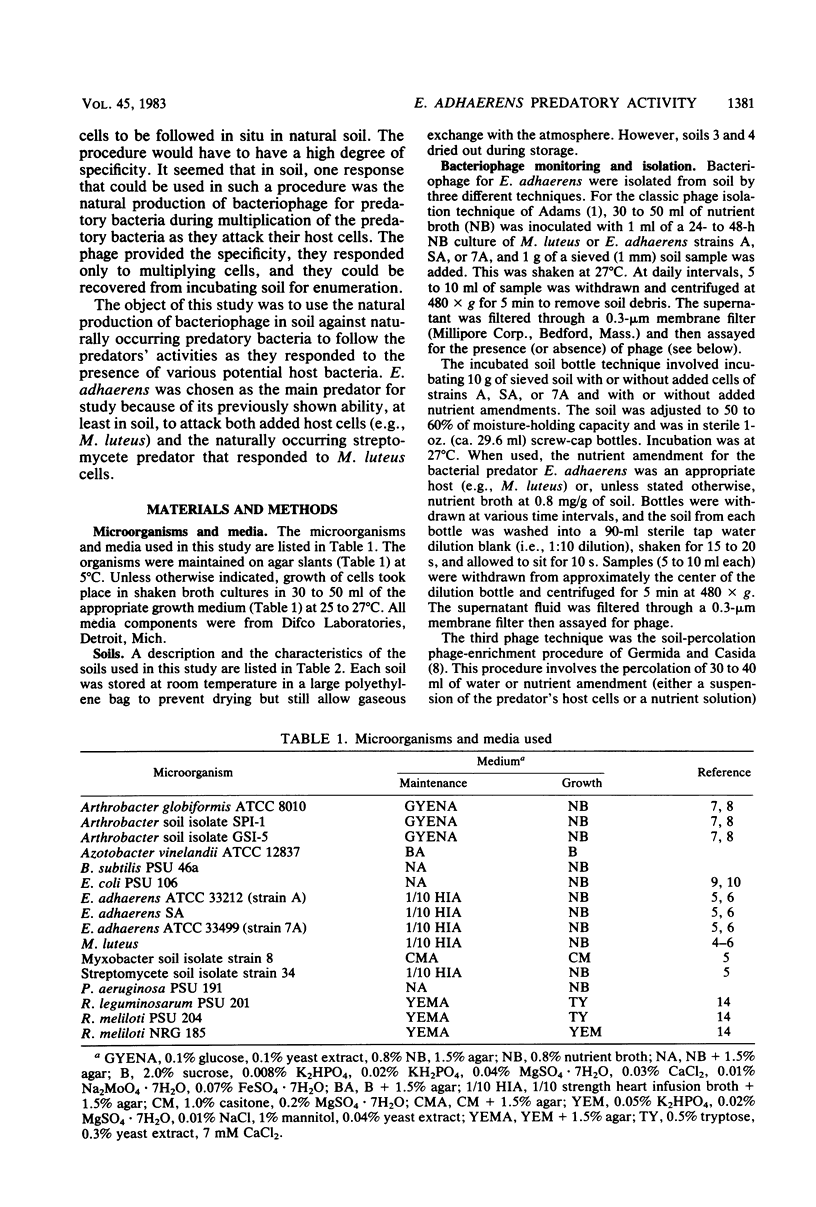
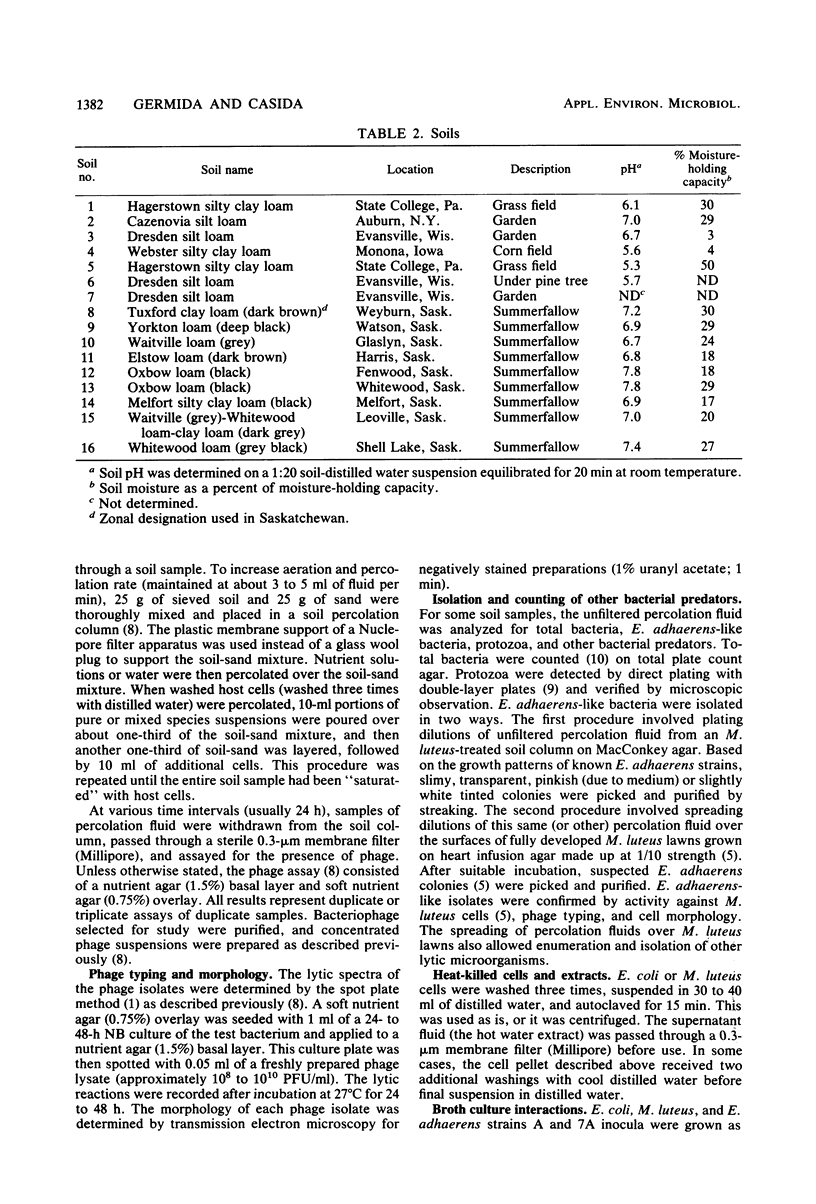
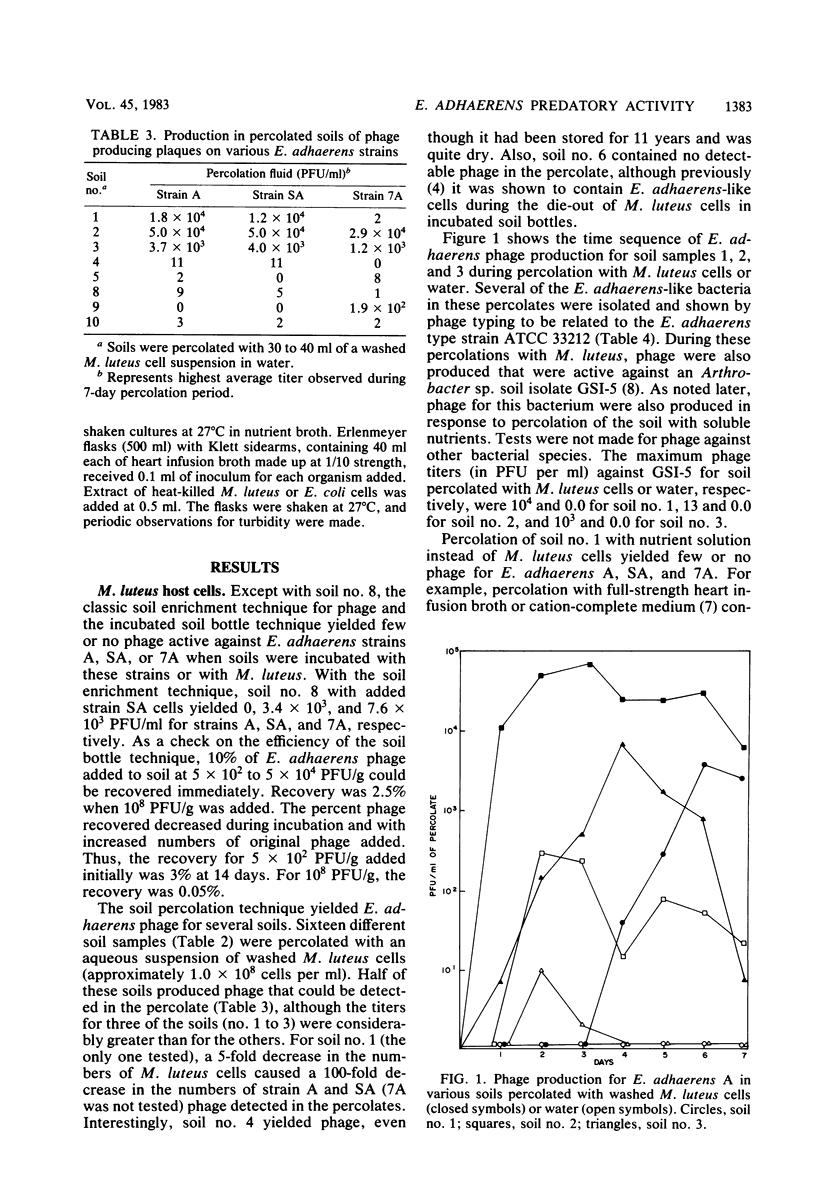
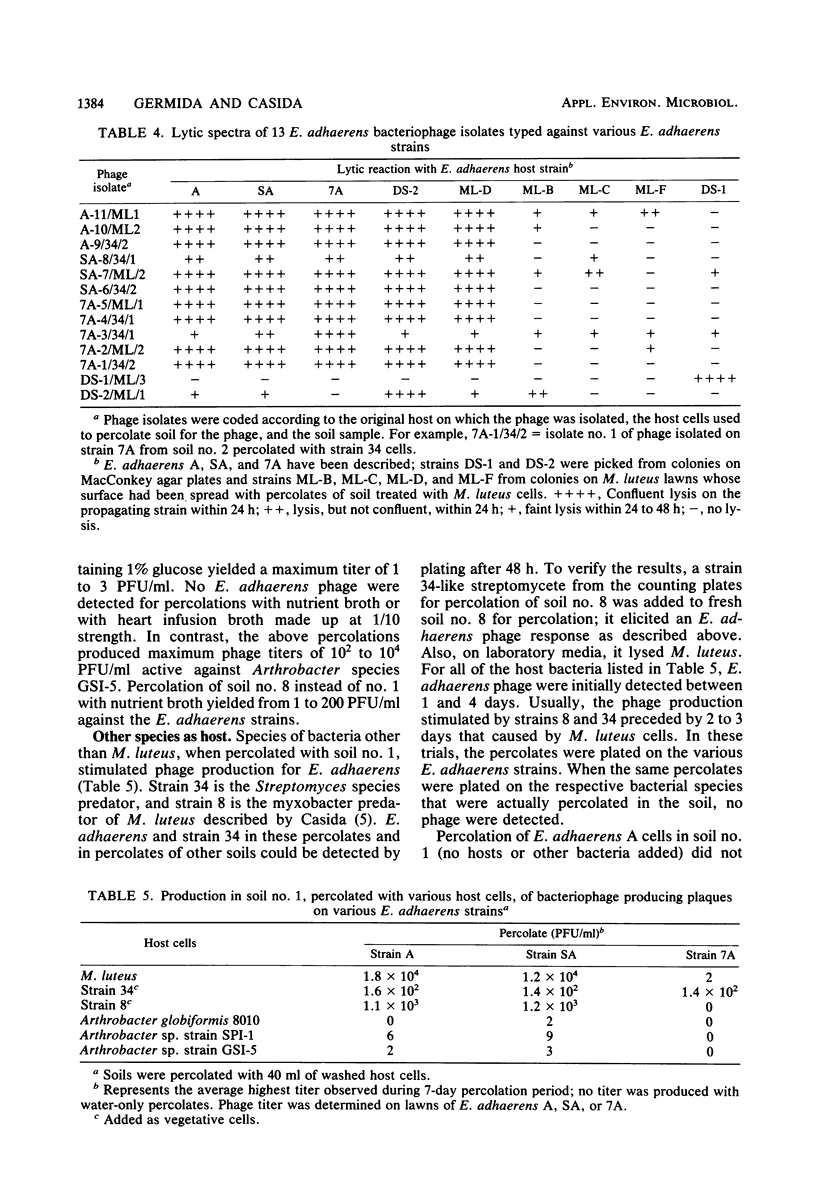
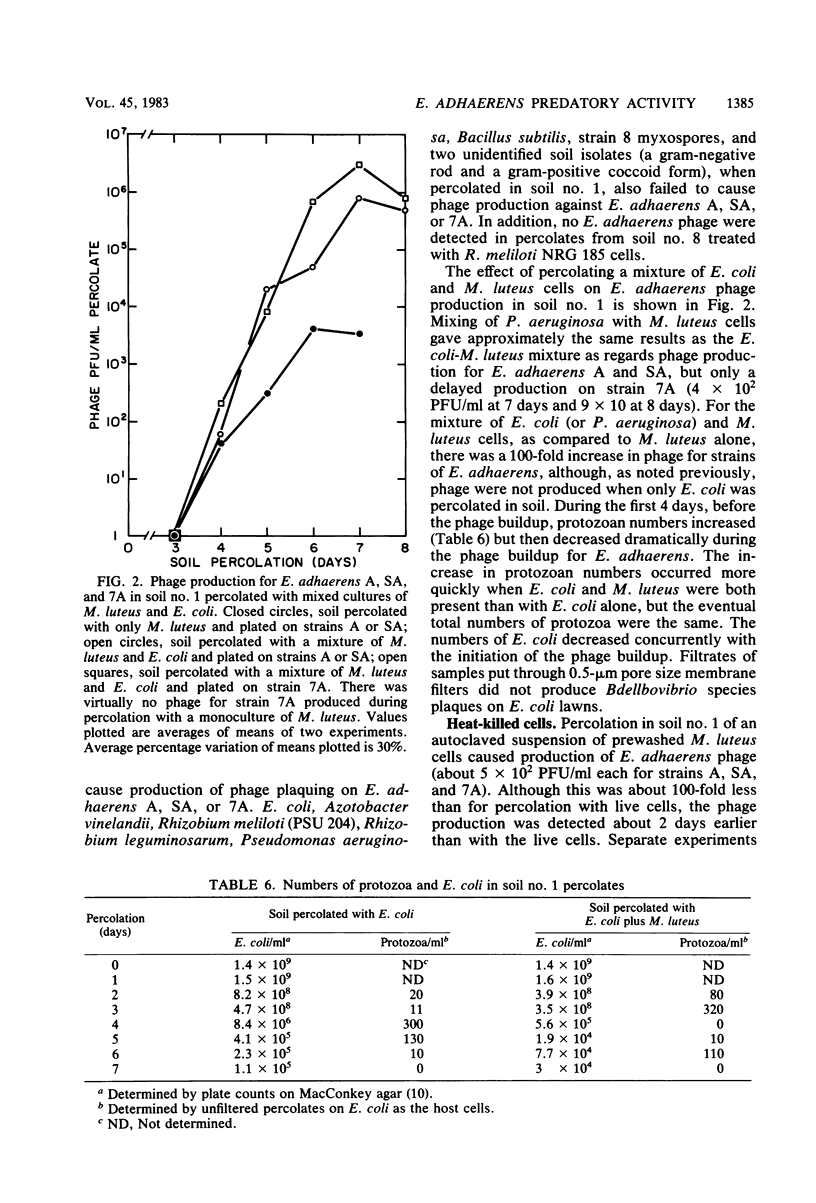
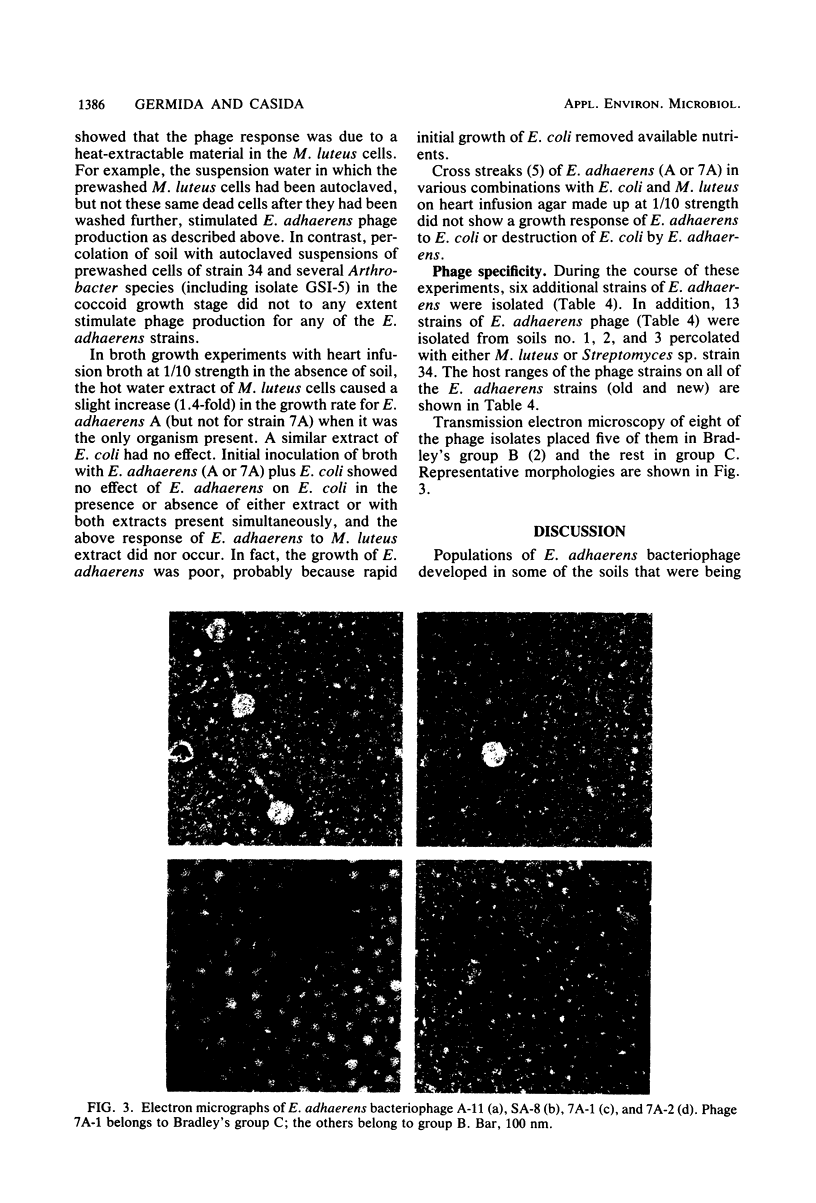
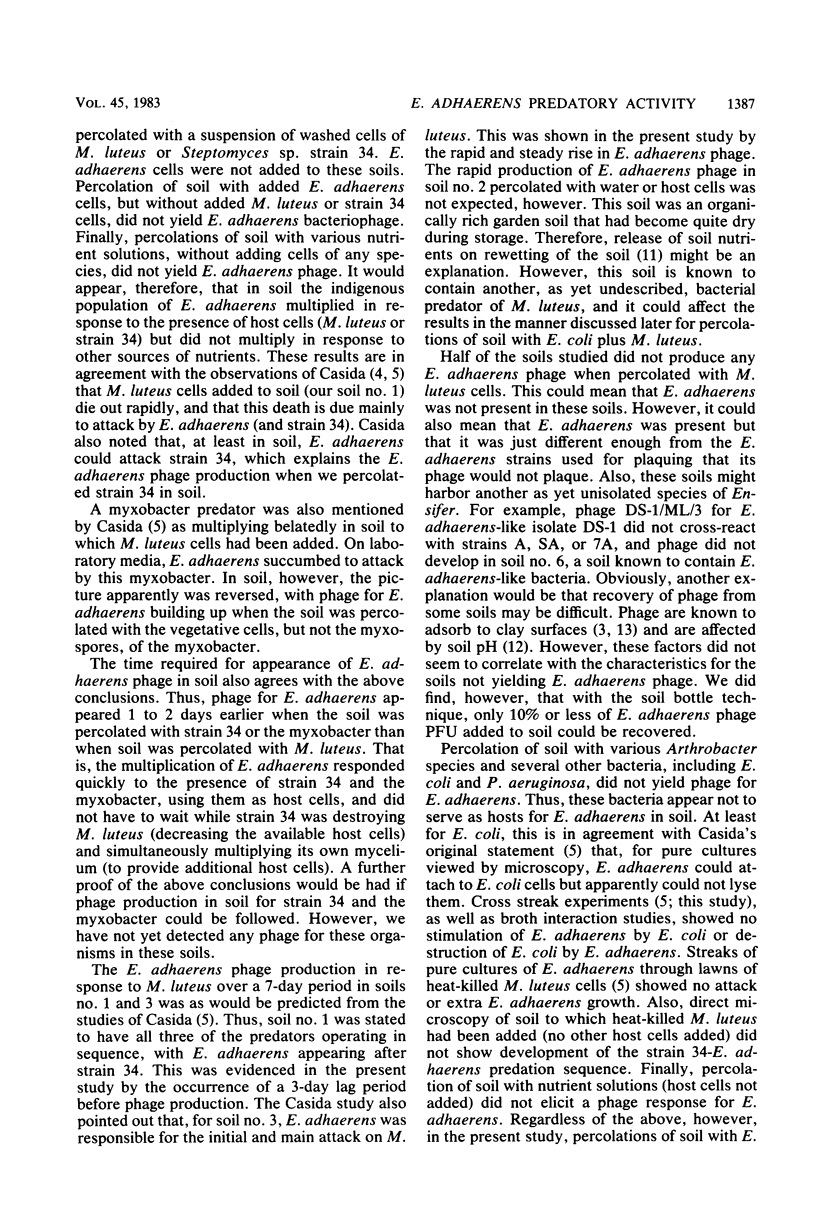
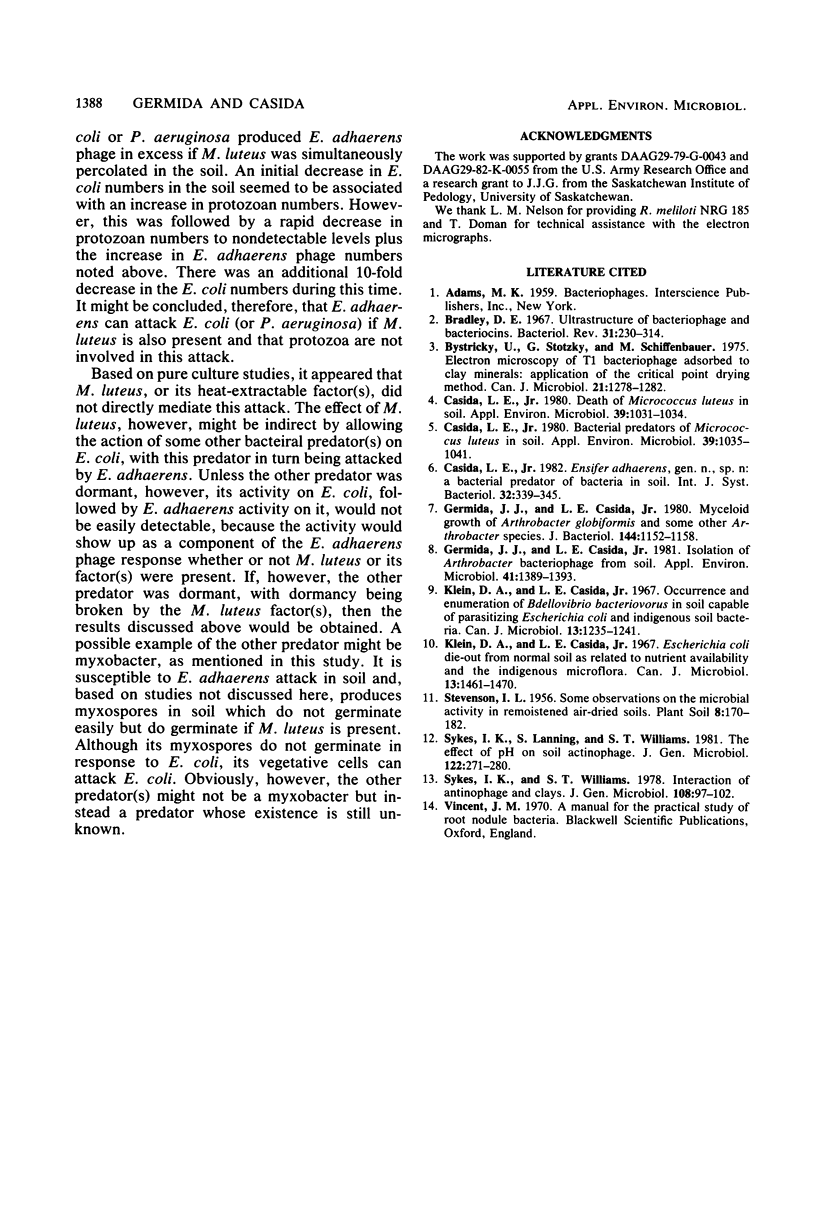
Images in this article
Selected References
These references are in PubMed. This may not be the complete list of references from this article.
- Bradley D. E. Ultrastructure of bacteriophage and bacteriocins. Bacteriol Rev. 1967 Dec;31(4):230–314. doi: 10.1128/br.31.4.230-314.1967. [DOI] [PMC free article] [PubMed] [Google Scholar]
- Bystricky V., Stotzky G., Schiffenbauer M. Electron microscopy of T1-bacteriophage adsorbed to clay minerals: application of the critical point drying method. Can J Microbiol. 1975 Aug;21(8):1278–1282. doi: 10.1139/m75-192. [DOI] [PubMed] [Google Scholar]
- Casida L. E. Bacterial Predators of Micrococcus luteus in Soil. Appl Environ Microbiol. 1980 May;39(5):1035–1041. doi: 10.1128/aem.39.5.1035-1041.1980. [DOI] [PMC free article] [PubMed] [Google Scholar]
- Casida L. E. Death of Micrococcus luteus in Soil. Appl Environ Microbiol. 1980 May;39(5):1031–1034. doi: 10.1128/aem.39.5.1031-1034.1980. [DOI] [PMC free article] [PubMed] [Google Scholar]
- Germida J. J., Casida L. E. Isolation of arthrobacter bacteriophage from soil. Appl Environ Microbiol. 1981 Jun;41(6):1389–1393. doi: 10.1128/aem.41.6.1389-1393.1981. [DOI] [PMC free article] [PubMed] [Google Scholar]
- Germida J. J., Casida L. E., Jr Myceloid growth of Arthrobacter globiformis and other Arthrobacter species. J Bacteriol. 1980 Dec;144(3):1152–1158. doi: 10.1128/jb.144.3.1152-1158.1980. [DOI] [PMC free article] [PubMed] [Google Scholar]
- Klein D. A., Casida L. E., Jr Escherichia coli die-out from normal soil as related to nutrient availability and the indigenous microflora. Can J Microbiol. 1967 Nov;13(11):1461–1470. doi: 10.1139/m67-194. [DOI] [PubMed] [Google Scholar]
- Klein D. A., Casida L. E., Jr Occurrence and enumeration of Bdellovibrio bacteriovorus in soil capable of parasitizing Escherichia coli and indigenous soil bacteria. Can J Microbiol. 1967 Sep;13(9):1235–1241. doi: 10.1139/m67-168. [DOI] [PubMed] [Google Scholar]



